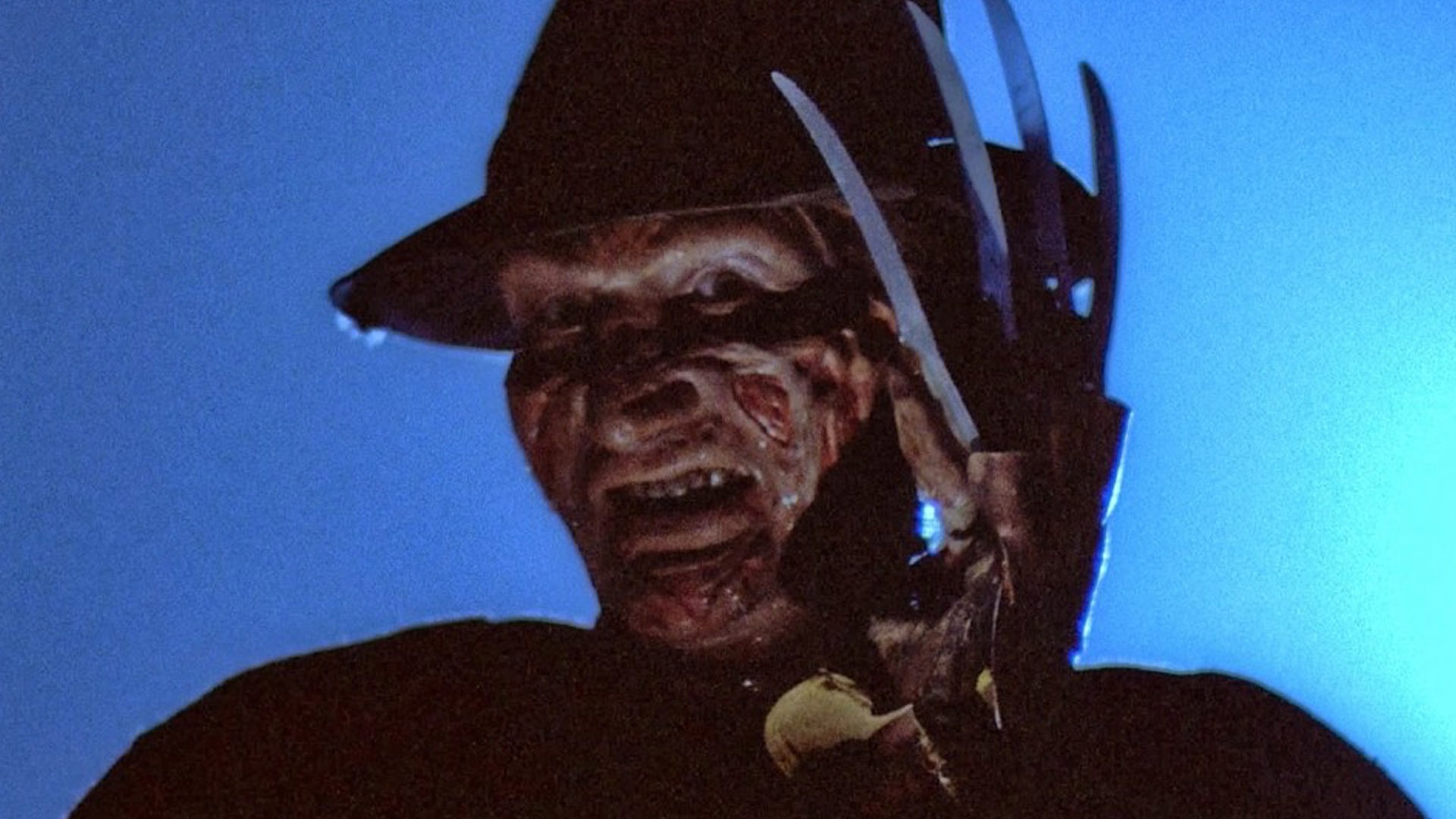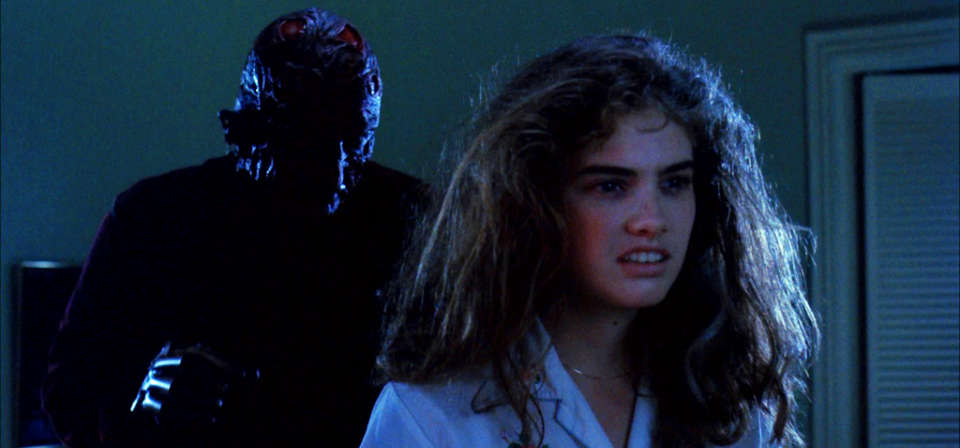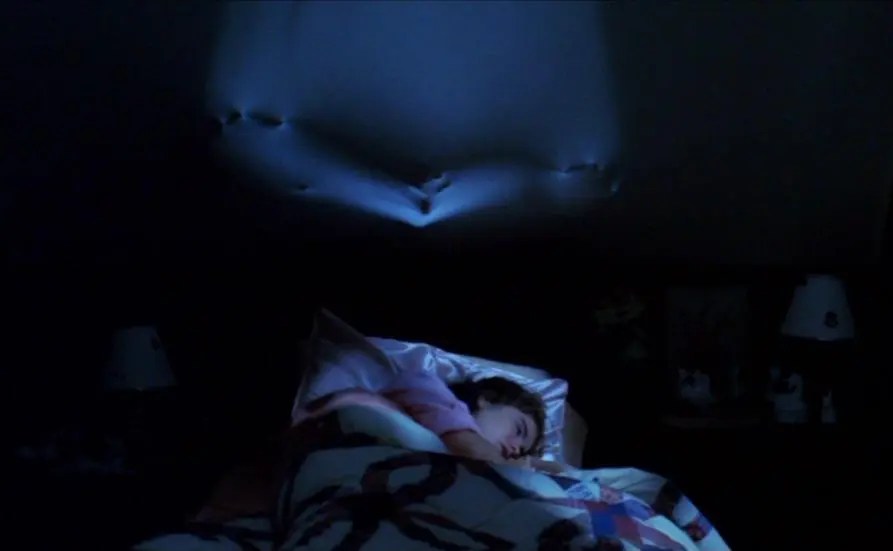Products You May Like

“One, two, Freddy’s coming for you…”
If asked to, I bet most of you could recite the rest of this nursery rhyme from the A Nightmare on Elm Street franchise. Released forty years ago this month, Wes Craven’s seminal slash-sterpiece entered our nightmares. That’s four decades of fantastical terror. Forty years of one of the greatest horror heroes we’ve ever seen in Nancy Thompson (Heather Langenkamp). And of course, forty years of that one-liner spouting, red and green sweater-wearing dream demon from Hell, Freddy Krueger (Robert Englund). Everyone knows Freddy. Through the seven-film series (nine if you count the remake and Freddy vs. Jason), he’s evolved from a frightening figure to an icon to a pop culture rock star. You can find his face on everything from t-shirts to lunch boxes to dog toys. Fans love Freddy. I love Freddy.
Confess your feelings about Freddy Krueger, though, and you’ll often be met with the same reaction. “But he’s a child murderer,” they’ll say with a concerned face verging on disgust, as if you somehow weren’t aware of this fact regarding a fictional character. A Nightmare on Elm Street has been my favorite franchise since I was a kid, so I’ve seen that look my fair share. It’s one that dismisses your opinion like the parents of Elm Street dismiss their children’s nightmares. What gets overlooked in each of these encounters is the “why?” Why do we love Freddy? For some, it’s his witty dialogue. For others, it’s Robert Englund’s playful performance. But for those like me, it’s because Freddy is horror’s biggest bully, and there’s nothing quite like the catharsis of watching him get taken down in embarrassing fashion again, and again, and again.

“Three, four, better lock your door…”
Craven’s inspiration for Freddy is well known. As a child, the filmmaker once encountered a strange man in a fedora outside his home. Each time little Wes peered out into the night, the man crept closer, until he was right at the front door. Scary stuff! That sense that someone is invading what would normally be a safe space, that’s where true fear takes over. It’s a similar feeling to what I experienced as a kid who was bullied relentlessly. When bullying is that bad, it doesn’t stay at school. It follows you home, it gets into bed with you, and it invades your dreams.
No other horror villain psychologically torments his victims quite like Freddy. You can outrun Michael Myers. You can lock Chucky in a closet. But you can’t escape Freddy. Like the worst bullies, he becomes a part of you (just ask Jesse/Mark Patton from A Nightmare On Elm Street 2). I had it so bad, that I could hear the laughter of my bullies when I looked in the mirror and saw the bruises they had left. I could see their mocking faces when I closed my eyes. And, yes, they would sometimes even show up in my nightmares.
In the same way that the kids of Elm Street feared sleep, I feared going to school. I’d lie there in bed like Nancy as she says a prayer, saying my own prayer in hopes that I could get through the school day unscathed. Craven understood the isolating horror of such an experience. That first A Nightmare on Elm Street frequently employs images of windows that imply Freddy crossing over from the outside to within. Tina’s (Amanda Wyss) final nightmare features the burnt madman whispering her name from just outside her window, a rock thrown at the glass that leaves a small hole piercing the comfort of her home, and finally, a bloody death in her own bed that boyfriend Rod (Jsu Garcia) is helpless to stop—all a metaphor for the way Freddy claws through the flesh and deep into the conscience.

“Five, six, grab your crucifix…”
Dreams fade, and so too did my belief that the bullying would ever stop. I sought the help of teachers, my parents, any adult I could find, but they all gave the same answer: “That’s just life, kid.”
Dreamt up during the Reagan years, a sense of rebellion hung heavy in the air when Freddy made his way to theaters. The utter disregard the parents of Elm Street have for their children spoke to the frustration of the youth and an adult world that had begun to punch down at them. The future looked grim, and no one seemed to care. In other words, the older generations became a bully for the next, and the Elm Street films reflect that. Freddy wears his victims down until they no longer have the simplest comfort of sleep. He destroys their friends, their support system, one by one. All while the adults look the other way.
“It’s only a dream.”
“Kids will be kids.”
The dismissal is the nightmare.
At every level, the adults of Elm Street fail to protect their children. The court lets Freddy loose on a technicality. The parents leave their kids to deal with their sins after roasting him alive. And they ignore the pleas, the pain, and the terror of Nancy and others when they ask for the simplest of actions, which is to believe them. As most bullies do, Freddy preys on his victims until they feel like Kincaid (Ken Sagoes) in his junkyard dream from A Nightmare on Elm Street 4. Lost. Alone. A mere speck on a planet taken over by his tormentor. Hopelessness wriggles into the skin like carrion worms. No adult, no parent, not even God can help you (if you believe in that sort of thing). “This is god,” says Freddy in reference to his glove just before Tina’s demise. In his world, pain rules all.

“Seven, eight, better stay up late…”
Standing tall against the ultimate bully that is Freddy is the ultimate counter to his violence, Nancy. On the surface, she embodies the familiar tropes that had become synonymous with “Final Girls” by 1984. Good-hearted. Virginal. The girl next door (or across the street in boyfriend Glen’s case). Nancy isn’t your average slasher protagonist, though. She’s into survival. She doesn’t run from the nightmares the way Rod and Glen do. She takes the fight to Freddy and she kicks the ever-loving shit out of him.
Engaging in fisticuffs with your bullies isn’t the right answer for everyone, though, nor is it the message that Craven wishes to imbue on his audience. “You face things…that’s your gift…but sometimes you have to turn away, too,” says Nancy’s mother, Marge (Ronee Blakley) just before entering the finale. There’s an inspirational strength in Nancy hunting down Freddy. We feel empowered by the way she sets traps all over her house—sorry, Home Alone, Nancy did it first—and we cheer while watching Freddy get knocked around before horror’s dream girl sets him on fire…again.
Yet nothing is more powerful than when Nancy turns her back on the malevolent dream demon in the end. “I take back every bit of energy I gave you,” she says. “You’re nothing,” she says. “You’re shit.” And with that, she walks out the door, victorious (we’ll go ahead and ignore the scare ending tacked on by producer Robert Shaye).
Some viewers might complain about how anti-climactic that finale feels. But to me, it’s one of the most inspirational in the genre. In the end, Nancy didn’t need fists or clever traps to stop Freddy. She simply needed to show him courage. Bullies feed on fear the way Freddy feeds on souls. But look deep into their own souls, and you’ll typically find a human more afraid of themselves than their victims are of them. Deep down, they know they’re cowards, just like Freddy.
And, just like Freddy, they wither in the face of courage. Think about it. Freddy comes for kids in their nightmares. A place where he makes the rules. He sneers, and he mocks, and he cackles at the screams of others as he turns their greatest fears on them. This is the same guy who stretches his limbs to make himself seem bigger and scarier, a sort of peacocking, if you will. But what is seen is not always real. Take him out of the dream, and suddenly, Freddy isn’t so scary. Outside of his realm, he’s small. He’s pathetic. He needs the fight to be unfair or he can’t win.
He’s shit.

“Nine, ten, never sleep again…”
The A Nightmare on Elm Street films didn’t stop my bullying. But they did splash some cold water on my face and wake me from my nightmare. Nancy. Kristen (Patricia Arquette) from A Nightmare on Elm Street 3. Alice (Lisa Wilcox) from A Nightmare on Elm Street 4. All warriors who stood up to one of the cruelest bullies ever dreamt up and made him understand how small he really was. They taught me not to be afraid. To turn my back on my tormenters and take their power away from them.
Every town has an Elm Street. Every Elm Street, a Freddy. Kids like I was, they’re everywhere, too. And as strange as it may be to consider, they need Freddy. They need to see him cower in the presence of true strength. To see him crumble under the idea that he is nothing. To know that when it comes down to it, he and every other bully out there is a coward afraid of their own reflection.
So, yeah, I love Freddy. I love him for what he means to me and the thousands of other kids who found strength in his defeat. We dress up like him, wear his face on our shirts, and buy his toys because it allows us to gain power over our fear and say we are not afraid anymore. I used to toss and turn in bed, but those days are history. In fact, I sleep pretty well now. I owe a lot of that to the A Nightmare on Elm Street films. To Wes. To Nancy. And that biggest of bullies who, when push comes to shove, is no more than a goofy little man in a dirty red and green sweater.
Categorized:Editorials

